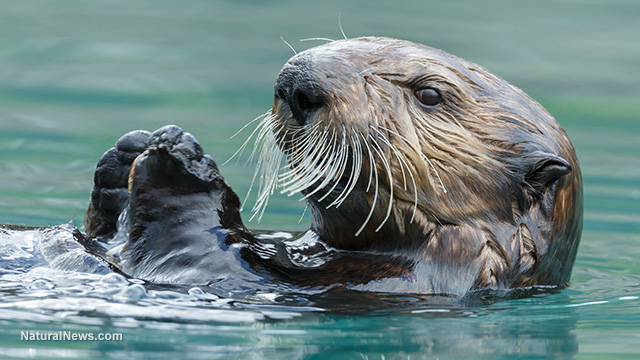Offshore fracking in southern California threatens dozens of endangered marine animals including whales, sea otters and turtles
12/06/2016 / By environews

Dozens of endangered marine animals are at risk due to fracking and acid well stimulation off the coast of southern California, according to two environmental non-profits that are threatening suit against the federal government.
The Environmental Defense Center and Santa Barbara Channelkeeper allege that the federal government has violated the Endangered Species Act by failing to consult with wildlife experts about the potential impacts offshore fracking might have on marine life.
An Aug. 10, 2016, letter written by the two groups addressed to half a dozen federal regulators asserts that oil and gas development and production on 43 current leases and 23 operating platforms located within federal, Outer Continental Shelf waters off the California coast, is threatening at least 25 species listed on the Endangered Species Act.
These include endangered marine and coastal fish species such as the scalloped hammerhead shark; marine mammals such as the blue whale, humpback whale, sperm whale, Guadalupe fur seal and southern sea otter; marine and coastal bird species including the marbled murrelet and short-tailed albatross; and four species of sea turtles.
Invasive fracking practices threatening southern California’s ‘incredible biological diversity’
On May 27, 2016, California’s Bureau of Ocean Energy Management and Bureau of Safety and Environmental Enforcement gave the green light for new oil and gas development because their database found no significant impact on wildlife.
But the non-profits allege that the organizations failed to genuinely asses the environmental impact, including the potential “destruction or adverse modification” of the endangered species’ critical habitat.
Big Oil is conducting potentially harmful operations in an area of southern California known for its “incredible biological diversity,” said the groups. The region is so diverse it’s been coined “the Galapagos of North America.”
The best science shows us that offshore well stimulation, including fracking and acid well stimulation, routinely results in “acid washes,” which can harm various marine and coastal species, said the non-profits.
Impact of fracking chemicals on wildlife poorly understood
The toxic chemicals used in fracking are problematic for marine life as they’re often dumped straight into the open ocean. The chemicals may also enter the water during handling, processing and transportation.
The true impacts of fracking chemicals on marine life are simply unknown because they have never been “meaningfully analyzed,” said the groups.
Fracking chemicals aren’t the only threat, either. The actual action of oil and gas exploration creates intense noises that may disturb or even kill marine life, particularly those relying on sonar.
Environmentalists are also concerned about the possibility of large marine mammals such as whales being struck by vessels delivering industry supplies. Furthermore, offshore fracking “extends the life of existing oil platforms thereby prolonging the occurrence” of environmental impacts. Oil spills are of course a huge concern as well, particularly in sensitive environments.
Offshore drilling increases risk of oil spills
“Such impacts include the risk of oil spills on a sensitive marine environment suffering from a history of devastating spills, including the May 19, 2015 rupture of the Plains All-American Pipeline, which delivered crude that originates from offshore platforms where WSTs have occurred. The spill harmed hundreds of coastal birds and other marine wildlife.”
Though BSEE and BOEM databases concluded no significant impact on wildlife, they did find that their actions “may affect” some endangered species, which under federal law requires consultation with wildlife experts – even if the impact is “benign” or of an “undetermined character.”
But the agencies dismissed these impacts as “negligible” and did not consult with wildlife experts. The Environmental Defense Center and Santa Barbara Channelkeeper say that if BSEE and BOEM fail to remedy the violations within 60 days they will pursue a lawsuit in federal court.
Sources:
Tagged Under: California, Sea Turtles, Sea Whales
RECENT NEWS & ARTICLES
COPYRIGHT © 2017 ENVIRON NEWS




















